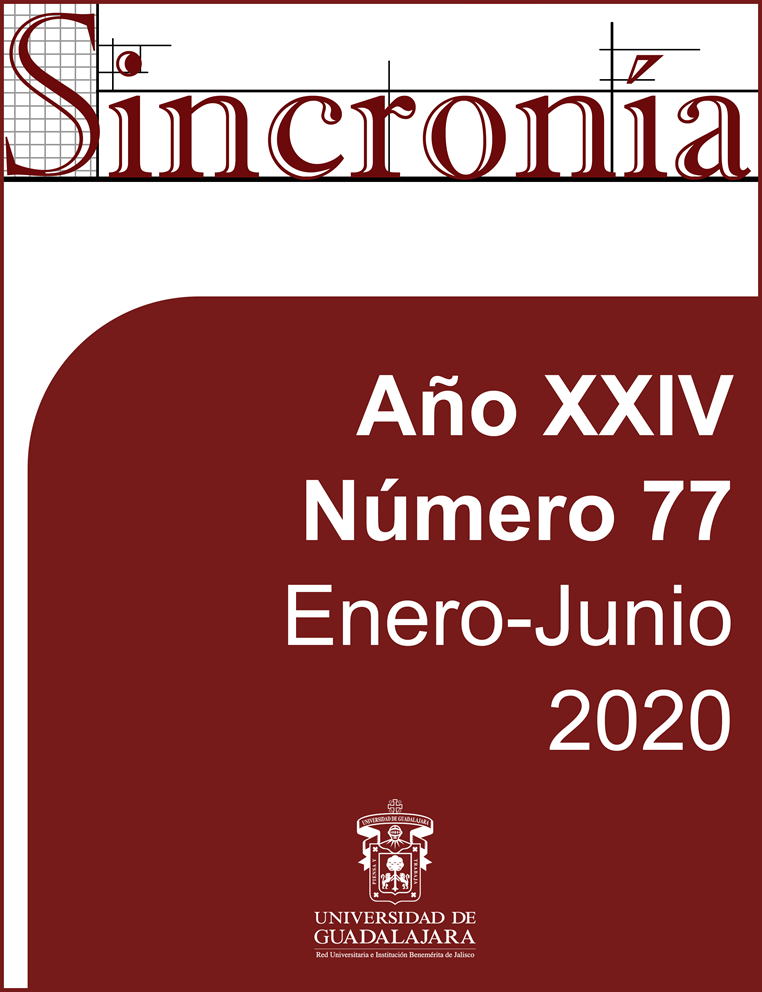Studies about Two Arreola’s Works
Keywords:
Popular Narrative, Text analysis, Corrido., Parable of BarterAbstract
The purpose of this text is to analyze the popular narrative, hierarchy, production of codes and collision between the generic and the literary in two of Juan Jose Arreola’s short stories entitled: “Corrido” and “Parable of the Barter”. It is taken into consideration that corridos, which derive from oral tradition, have become part of the epic, lyric and drama genres of Mexican popular culture. The analysis of this short story encompasses the study of the characters, the narration of concrete facts which lead to the conflict and result in violence, and the source of the conflict. This study also deliberates upon people’s history, customs, and way of speaking, that is to say: speech structure, gramatical elements, linguistic, philologic and expressive outreach of the story. The text is also centered in analyzing the different parts of the composition of a corrido, such as: the request to tell what has occurred, precision of the information, descriptions, moral sentences and farewell. Additionally, the point of view of the witness narrator is taken into account, since this narrator makes the plot more appealing, as well as the topic (passion tragedies) and the social role of popular corridos. The methodology used hereby is based on four methods of analysis: sociological criticism, stylistics, exegesis and parody according to Bakhtin.
Downloads
References
Amoretti, M. (1993). Diccionario de Términos Asociados en Teoría Sociocrítica, San José: Universidad de Costa Rica.
Andujar. (S/f). IDEAL, Recuperado de //andujar.ideal.es/andujar/noticias/201207/18/cantaros-y-botijos.html
Anónimo. (S. XVI). Romancero y cancionero anónimo hasta el siglo XVI. Romances y canciones, http://amediavoz.com/romancero.htm (Obtenido en noviembre de 2015).
Anónimo. (2013). Mis experiencias, mis imágenes, España, en https://drosam-misexperiencias.blogspot.com/2013/08/en-la-alfareria-se-llama-cantaro-la.html (Obtenido el 15 de octubre de 2018).
Arreola, J. J. (1971). Confabulario, México: Joaquín Mortíz.
Arreola, J. J. (1952). “Corrido”, en Luis López Nieves, https://ciudadseva.com/texto/corrido/ (Obtenido el 17 de octubre de 2018).
Curtius, E. R. (1998). Literatura europea y Edad Media latina, México: Fondo de Cultura Mexicana, Sección de Lengua y estudios literarios.
Gómez, P. (1984). El lenguaje y las diferencias sociales, México: EDUG/Universidad de Guadalajara, Cuadernos universitarios, Núm. 2. Segunda Serie.
Homero. (2000). La Iliada, Introducción y notas de Juan Alarcón Benito, España: EDIMAT Libros, Ediciones y distribuciones Mateos, Col. Obras Selectas.
Hutcheon, L. (1993). “La política en la parodia posmoderna” en Criterios. Edición especial en homenaje a Bajtin, La Habana, (pp.187-203). Recuperado de http://www.mnba.gob.cl/617/articles-8672_archivo_04.pdf.
Menéndez, R. (1968). Romancero hispánico (hispano-portugués, americano y sefardí, teoría e historia, Tomo I: con ilustraciones musicales de Gonzalo Menéndez-Pidal, Madrid: Espasa-Calpe, S.A.
Mendoza, V. T. (1997). El romance español y el corrido mexicano. Estudio comparativo, México: UNAM.
Mendoza, V. T. (Comp.). (2003). El corrido mexicano, México: Fondo de Cultura Económica, Colección popular.
Ochoa, E. (2011). “Canción de la sed de agua, por José Somoza”, en Apuntes para una Biblioteca de escritores españoles contemporáneos en prosa y verso, [Versión digitalizada] París: Bandry. Lib. Europea. Recuperado de https://books.google.es/books?id=RsLZfB3S8-UC&pg=PA765&dq=c%C3%A1ntaro+de+novia&hl=es&sa=X&ei=HW-OT_CRHYfS0QXljqX5DA#v=onepage&q=c%C3%A1ntaro%20de%20novia&f=false.
Paz, O. (1989). Lo mejor de Octavio Paz. El fuego de cada día, Mexico: Grupo Editorial Planeta, S.A. de C.V.
Vega, F. L. (2018). La moza del cántaro, Barcelona: Red ediciones S.L.
Virgilio. (2000). La Eneida, México: Editores mexicanos unidos.
Downloads
Published
How to Cite
Issue
Section
License
Copyright (c) 2020 Marina Ruano Gutiérrez, Roberto Herrera Gallardo, Irma Angélica Bañuelos Ávila

This work is licensed under a Creative Commons Attribution-NonCommercial 4.0 International License.
You are free to:
- Share — copy and redistribute the material in any medium or format
- Adapt — remix, transform, and build upon the material
- The licensor cannot revoke these freedoms as long as you follow the license terms.
Under the following terms:
- Attribution — You must give appropriate credit , provide a link to the license, and indicate if changes were made . You may do so in any reasonable manner, but not in any way that suggests the licensor endorses you or your use.
- NonCommercial — You may not use the material for commercial purposes .
- No additional restrictions — You may not apply legal terms or technological measures that legally restrict others from doing anything the license permits.




























